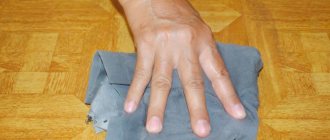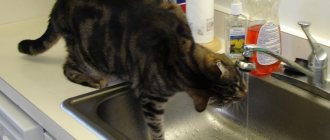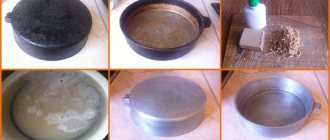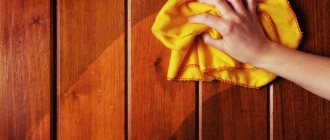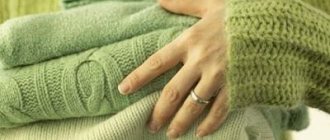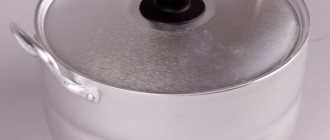Plastic cleaners are used when it is necessary to remove dirt from the plastic elements of the car interior. Such as a dashboard, control panel, door card, sills, trunk elements or other plastic parts of the car interior. Unlike plastic polishes, they not only add shine, but also actually clean the surface of dirt, giving a matte or natural appearance to the surface.
Therefore, car owners naturally have a question related to the choice of certain products for cleaning and polishing plastic, since there are a huge number of such car interior plastic cleaners on store shelves. There are universal cleaning and polishing products that can clean not only plastic, but also leather, rubber, vinyl and other surfaces. In addition, car plastic cleaners are available in the form of sprays (both manual and balloon) and foam formulations. It is difficult to figure out which one is better.
On the Internet you can find a large number of conflicting reviews about various car interior plastic cleaners. Also, many car owners conduct their own tests of such products. The material contains information about the most popular cleaners and gives their rating in accordance with their characteristics and operating effect. If you have had personal experience using this or that plastic cleaner, we ask you to express your personal thoughts in the comments.
Why does plastic turn yellow?
Plastic can turn yellow due to improper care, sudden temperature changes and low-quality additives in the polymer, and fade in the sun. Let's look at the five main reasons why plastic turns yellow.
Burns out in the sun
Ultraviolet radiation destroys the polymer compounds of plastic. To avoid yellowing, light stabilizers and benzophenol are added to plastic during production, which block the penetration of sunlight into the plastic and color change.
Temperature changes
With sudden temperature changes, the plastic is deformed and microcracks appear in it, into which air begins to flow. This leads to slow oxidation of the top layer of plastic and yellowing.
Improper care
The surface layer of plastic can be destroyed by acids, alkalis, aggressive cleaning agents and hard brushes. At the same time, microcracks form on the surface of the polymer, into which dirt gets trapped, changing the color of the material.
Dust, grease and soot
If there is no hood in the kitchen or it cannot cope with the outflow of air, and people smoke at home, this leads to soot, dust, grease and nicotine deposits settling on plastic items. They penetrate the surface layer of the plastic and change its color. First of all, plastic windows in the kitchen turn yellow.
Poor quality material
Violating plastic production technology, using recycled materials or saving on color additives worsens the surface and protective layer of the material. This leads to the rapid appearance of yellow spots on the surface.
Caring for rubber seals
Seals
Despite the fact that such seals (rubber bands) are made of modern materials, time and weather conditions contribute to their natural aging. Rubber bands play a very important role in the design of modern windows. They block drafts, prevent the penetration of moisture (rain, moisture) and reduce street noise. Temperature changes, sunlight, humidity and dust slowly but surely destroy window seals. To extend their life (service life), it is recommended to clean them from dust and dirt once or twice a year and lubricate and wipe them with special products.
How to lubricate rubber bands for sealing PVC windows?
| Rubber seal care products | Advantages |
| Silicone lubricants have: relatively low viscosity; lies on the surface in an even layer; protects the rubber seal from the harmful effects of moisture; slows down the wear period; silicone has neither odor nor color, which is why it can be used for seals of absolutely any color; The temperature resistance of silicone ranges from - 50 C to + 230 C |
| Professional construction chemicals: Aerosol WD-40 | Easy to use: you can simply spray it along the entire length of the rubber seal |
| Kits that are designed for comprehensive maintenance of PVC structures. For example, Maintenance agent for rubber seals FENOFLEX | FENOFLEX: maintains the original elasticity of the rubber parts of the window; increases their wear resistance by 20-25%; increases the resistance of rubber to extremely low temperatures; all elements contained in the composition are biodegradable, non-toxic, and, most importantly, safe for humans. |
| Non-professional products: Glycerin | From glycerin, the seal will become softer, more elastic, and covered with an invisible layer of film, which provides long-term protection against adverse effects on the entire structure as a whole and extends the life of the window. |
Home cleaning methods
How to bleach plastic if it has already turned yellow? Available means are used to remove all types of contaminants. Let's look at popular home methods for cleaning plastic from yellowness.
Washing powder and soda
The method is suitable for cleaning double-glazed windows, household appliances and plastic items that can be wet. Mix 50 grams of washing powder, 1–2 tablespoons of soda and one glass of water in a container. Use this solution and a soft sponge to wipe the yellowed parts and leave for 2-3 hours and then rinse with water.
Dishwashing liquid
Dishwashing liquid is suitable for removing mild yellow stains, greasy stains and preventing yellowing of plastic. Dampen a soft sponge or rag with water, then add 2-3 drops of dishwashing liquid and wipe the plastic. Rinse with water and wipe dry.
Vinegar
Vinegar is safe for plastic, but be careful when cleaning patterned plastic surfaces as it may rub off. Vinegar also has a strong pungent odor, so it is recommended to carry out cleaning with a mask. Take 70% bite essence, dampen a soft cloth with it and wipe the yellowish area. Rinse with water and wipe with a dry cloth. To enhance the effect, sprinkle baking soda on the stains and wipe with a sponge soaked in vinegar. Then rinse with water and wipe dry. This method also removes greasy stains from plastic well.
Hydrogen peroxide
Use pharmacy grade 3-6% hydrogen peroxide: it is suitable for cleaning household plastic. It is not recommended to use technical 35–40% hydrogen peroxide, as it is caustic and is used in industry. Dampen a rag or sponge with peroxide, wipe the yellowed stains and rinse with water. If the yellowness is strong, treat the stain 2-3 times.
Alcohol
You can use industrial or medical alcohol to remove yellow stains from direct sunlight. Before cleaning, test the plastic's reaction to alcohol by rubbing a small area of the surface. Dampen a rag or sponge with alcohol, gently rub the yellow stain, and then wipe with a damp cloth.
Citric acid with chlorine
This method is used for severe and old stains, since chlorine has a pungent odor. Before cleaning, put on rubber gloves and open the window. Mix citric acid and bleach in a 1:1 ratio, apply to the yellow spot and leave for 30–40 minutes. Rinse with warm water and wipe dry.
Bleach
Bleach is made from chlorine and diluted with water to create a solution of different cones - the most popular household bleach. To remove yellow stains from plastic, add one tablespoon of bleach to one liter of water. Rub the stain with a sponge and solution or soak the item for 20–30 minutes. Rinse with water and wipe with a dry cloth.
Acetone
This is an aggressive product that is not suitable for all types of plastic, and is rarely used. Before cleaning, put on rubber gloves and a mask and test the effect of acetone on a small area of plastic. Dampen a rag or sponge with the product, wipe the yellow surface without rubbing and rinse with water.
Tooth powder with chalk
Use tooth powder and chalk to remove fresh yellow stains. Crush the chalk, mix it with tooth powder in a 1:1 ratio and add water to make a paste. Apply to the stain, leave for 15-20 minutes and then remove marks with a cloth.
Melamine sponge
The melamine sponge is made from melamine and dense foam rubber and is used to clean any dirt. It is suitable for removing yellowness from plastic without leaving streaks on the surface. Dampen a sponge with water and wipe the stains. Do not use cleaning products - the sponge will lose its properties.
Wipes for cleaning glass
In addition to liquid glass cleaners, you can purchase special wipes. They make housework easier, remove dirt, dust, fly marks, fingerprints and more.
On sale you can find napkins made from the following materials:
- Cellulose. It absorbs liquid well, collects dust and does not leave behind streaks. Use wet wipes.
- Microfiber. This synthetic material polishes glass without leaving streaks. Napkins are used both dry and wet. Microfiber products are reusable and washable.
- Viscose. Such napkins have an antistatic effect, do not electrify the surface, but due to their natural composition (compressed wood cellulose), they quickly begin to emit unpleasant odors. Therefore, they will have to be changed frequently.
- Bamboo. This material perfectly absorbs moisture and dirt and does not absorb foreign odors.
When choosing napkins for cleaning windows, you can also purchase products made from artificial suede. They polish glass well, do not scratch them and do not leave streaks behind.
Top 3 best wipes for cleaning glass:
- Clean microfiber cloths for windows . The set includes 2 pieces. The products are not impregnated with foreign compounds, are durable, and odorless. The cost of packaging is 215 rubles.
- Vileda cloth for cleaning windows . This product is made of viscose with the addition of polyester. It can be washed in a machine. The price of 1 piece is 320 rubles.
- aQualine faux suede cloth for windows and mirrors . The size of the product is 35x40 cm. The fabric is not afraid of washing at high temperatures (up to 95 degrees). Price – 150 rubles per piece.
Special means
If home methods do not help, special cleaning products will come to the rescue that will carefully remove yellowness. Before use, read the instructions and use rubber gloves and a mask.
Car cosmetics
Car spray is suitable for removing yellow stains from windows, window sills and household plastics. Spray the product onto the stain, rub vigorously and leave for half an hour. Then wipe with a damp cloth.
Cleaning products for plastic
There are special cleaning products for plastic that remove heavy yellowing and dirt. Cosmoklar, Domestos, Cif, Meine Liebe are universal and effective products. Some of them provide an antistatic effect: after treatment, dust will not accumulate on the surface of the plastic.
Hair lightener
To remove yellowness, you can use a hair bleach: the bleaching function is performed by ammonia, which is part of the product. Add two tablespoons of hydrogen peroxide to one liter of water and a hair lightener by eye. Wipe the yellow stains with the solution and rinse with water.
Napkins
Whitening wipes with special impregnation carefully whiten plastic: they do not remove the protective layer. Suitable for removing yellowness, grease and dirt from computer equipment and household plastics. Wipe off the yellow stain with a napkin and leave to dry.
Aerosol paint
If you can't remove the yellow stain, paint over it with white spray paint. Cover the clean areas of plastic with duct tape and paint the yellow.
Polyurethane foam cleaner
Polyurethane foam cleaner is used to remove uncured foam from various parts of the gun for applying polyurethane foam, as well as to clean other surfaces. The foam cleaner is suitable for degreasing surfaces before applying silicone sealants and polyurethanes.
Mode of application:
Manual cleaning - press the nozzle tightly against the valve and, bending it away from you, spray onto the surface with unhardened foam.
Cleaning the gun - screw the cleaner bottle onto the gun and, pressing the trigger of the gun, clean the gun from foam; - unscrew the cleaner bottle and spray it on the outside of the gun, as well as on the valve of the foam bottle.
General recommendations
To clean the plastic of different products, follow the recommendations:
- Clean windows and sills from top to bottom.
- Remove microwave stains with citric acid.
- Turn off the refrigerator before cleaning. Use products without a pungent and persistent odor so as not to spoil the products.
- To clean your computer and other equipment, use special wipes.
- Remove the grilles from the air conditioner and rinse the filter with water. Wash the lid and plastic parts with soda.
- Clean surfaces in the toilet, bathroom and shower stall with vinegar or citric acid.
- In a car, in addition to specialized products for removing yellowness, you can use soda and washing powder.
- Use citric acid or vinegar to remove stains in the washing machine.
- Use soft rags and sponges that will not scratch the surface of the plastic.
- When using chemicals, wear masks and gloves.
- Ventilate the room.
- Study the manufacturer's instructions on how to care for plastic.
General rules for caring for plastic windows
A PVC window is a complex product that consists of:
- profile - which is influenced by the external environment;
- fittings - elements that, with the help of angular gears and connecting nodes, form a common circuit. In turn, which is subject to friction and, accordingly, wear;
- sealing rubber - which loses its elasticity during operation;
- glass unit - on which dust, dirt accumulates over time, and scratches appear.
Inadequate care of plastic windows, violation of the rules of operation of the product, leads them to premature aging. To prevent this from happening, it is necessary to clean the windows from dirt twice a year, before and after the winter period, and lubricate them with special products.
Necessary equipment for washing plastic windows
How to protect the surface from yellowing
To prevent yellowing, regularly wash the plastic with soapy water and special products that create a protective layer. If possible, limit exposure of plastic to sunlight and heat. Do not smoke in the kitchen or indoors where there are plastic windows - they may turn yellow. Don’t despair if you can’t remove the old yellow stains on your windows - professionals can handle any stains. Order your apartment windows washed using high-quality cleaning products by experienced cleaners and enjoy cleanliness and comfort.
General information
Also, one of the most important qualities is safety, so they can be safely used in residential areas. The materials used for the manufacture of plastic panels undergo all necessary tests and have a quality certificate. Another important advantage is that plastic panels are moisture resistant and also resistant to various chemicals. Another plus is the huge range of colors of plastic panels.
Important: when choosing plastic panels, you need to know exactly where they will be mounted, because what is suitable for the kitchen is not suitable for the hallway. For example, matte panels are difficult to clean from greasy stains, so they are not suitable for a kitchen backsplash.
Helpful information
To ensure that the process of removing rust from plastic goes without any problems, you must adhere to the following recommendations:
To remove stains from light-colored plastic surfaces, use only white rags. If you take colored fabric, there is a risk of pigment transferring from the fabric to the plastic. As a result, additional cleaning will be required.- You need to wear gloves when working with aggressive compounds. If the product has a pungent odor, additional respiratory protection is required. The room must be ventilated.
- After cleaning is completed, the surface should be wiped with a clean damp cloth. This is necessary in order to remove any remaining product from the plastic and prevent it from damaging the product.




